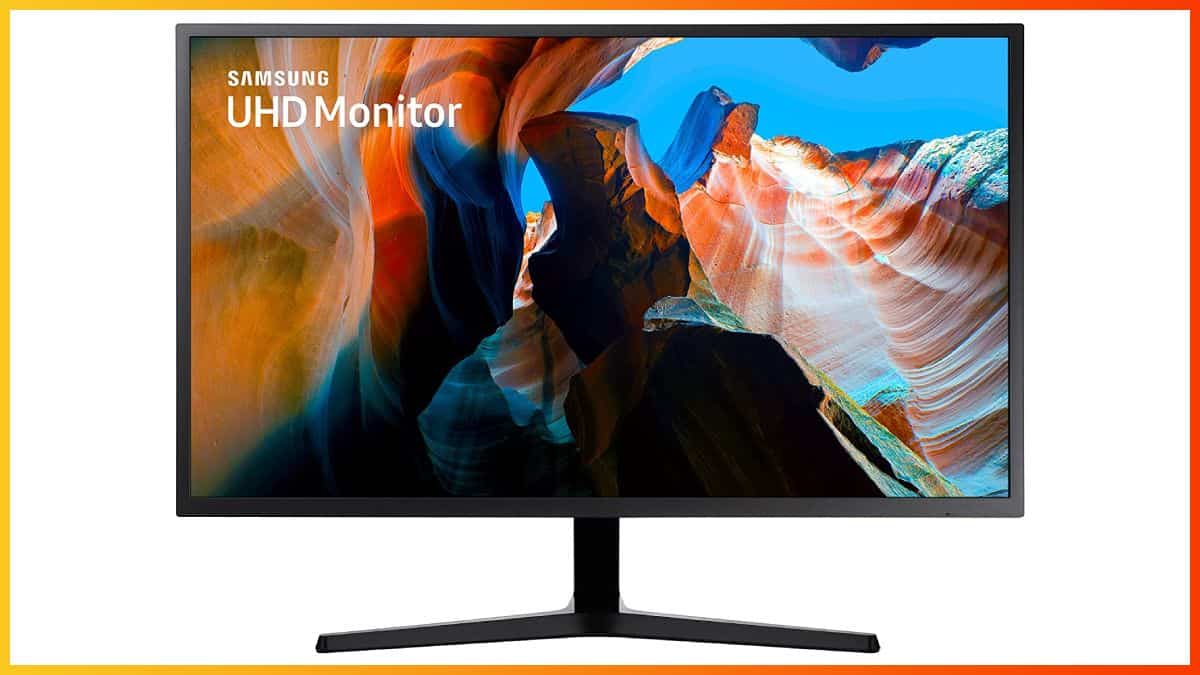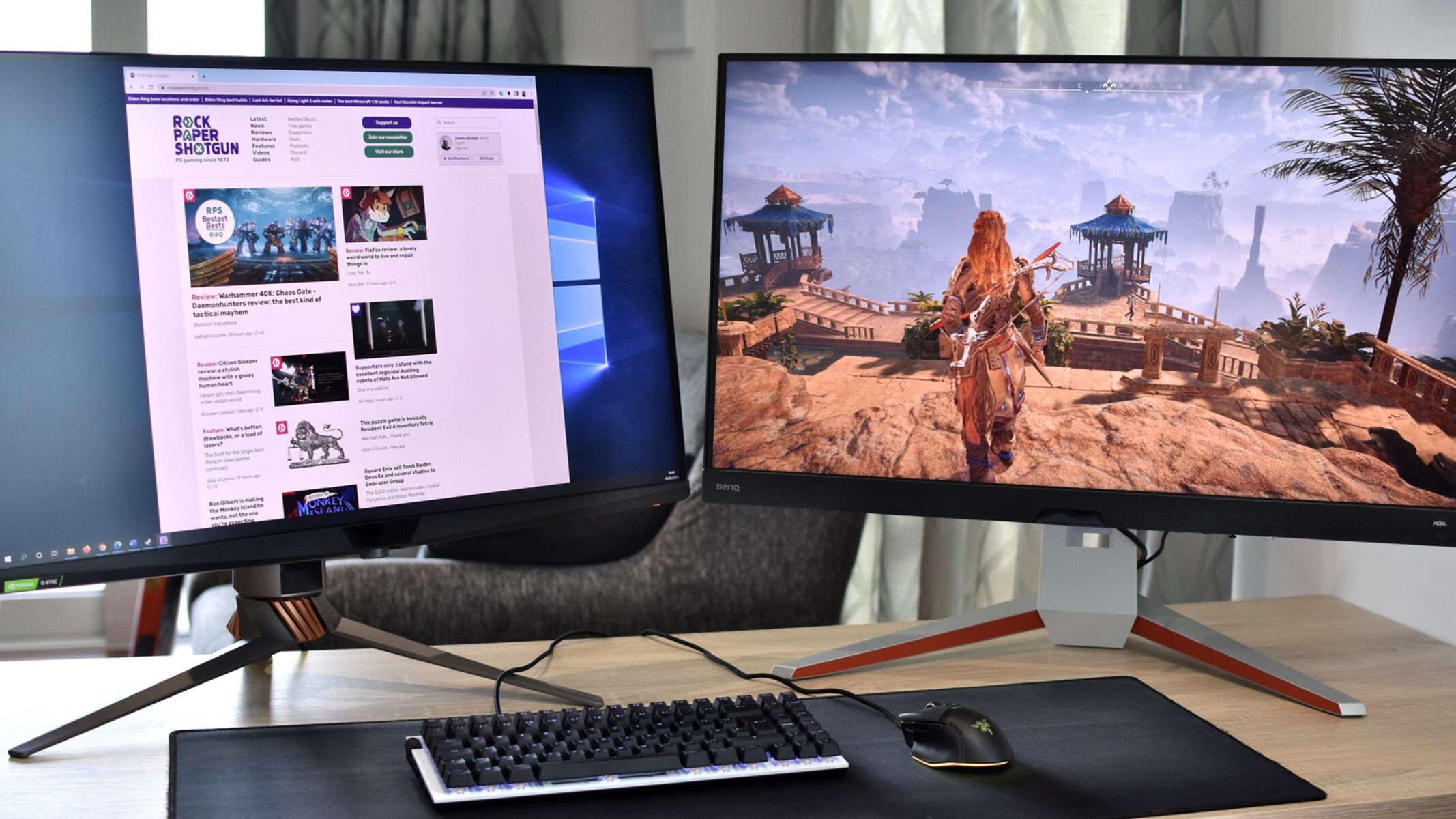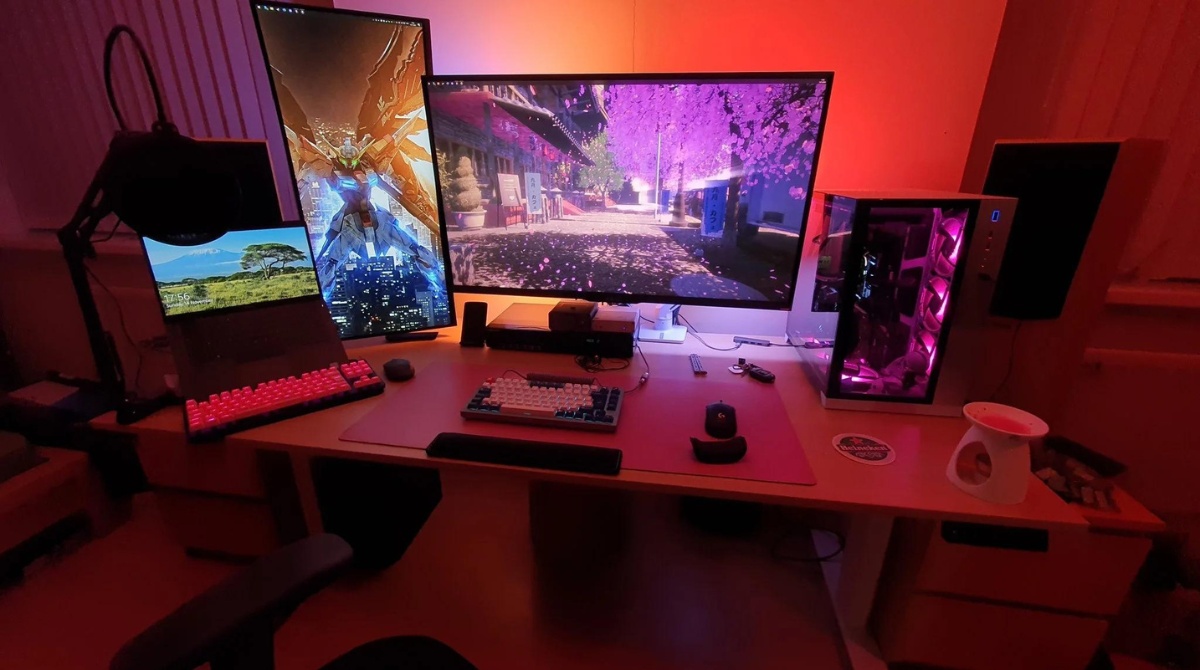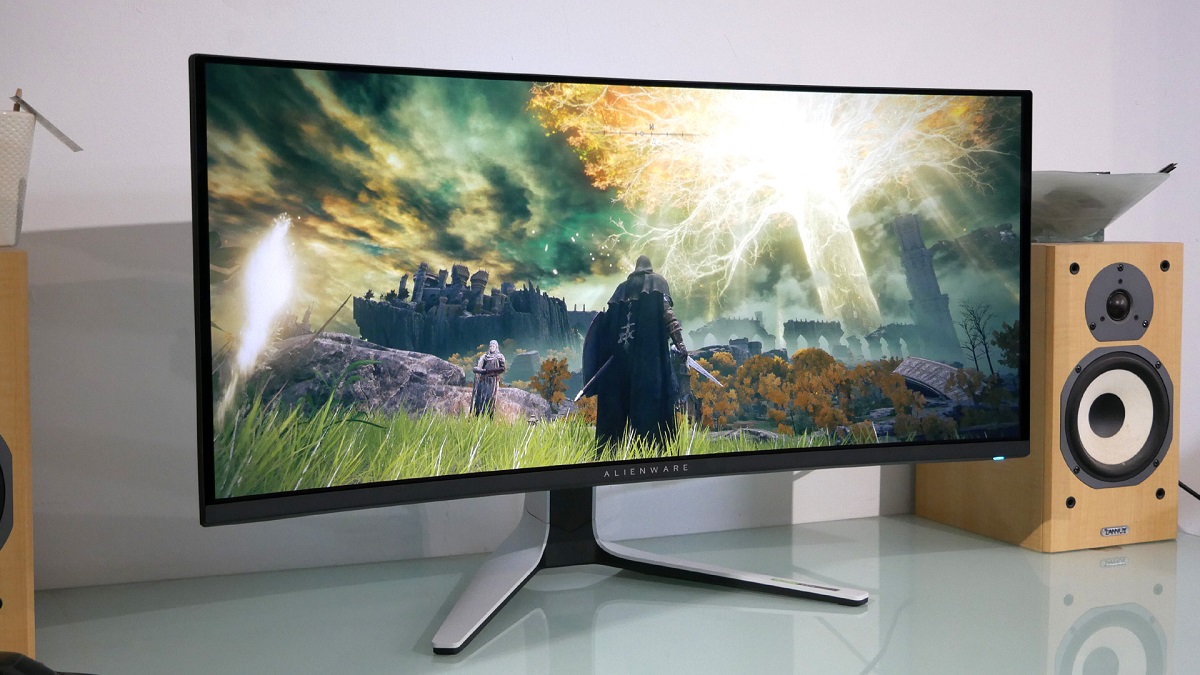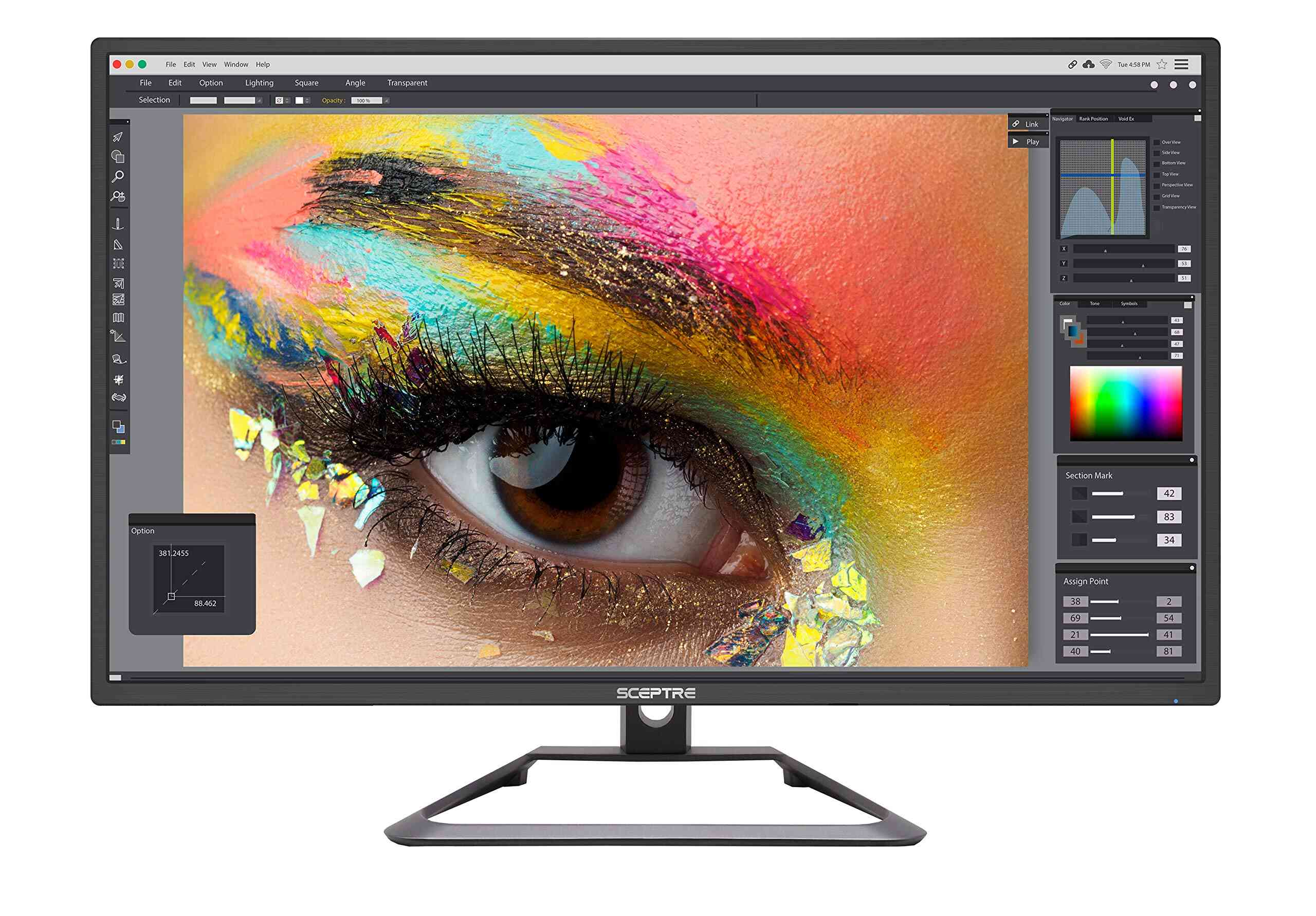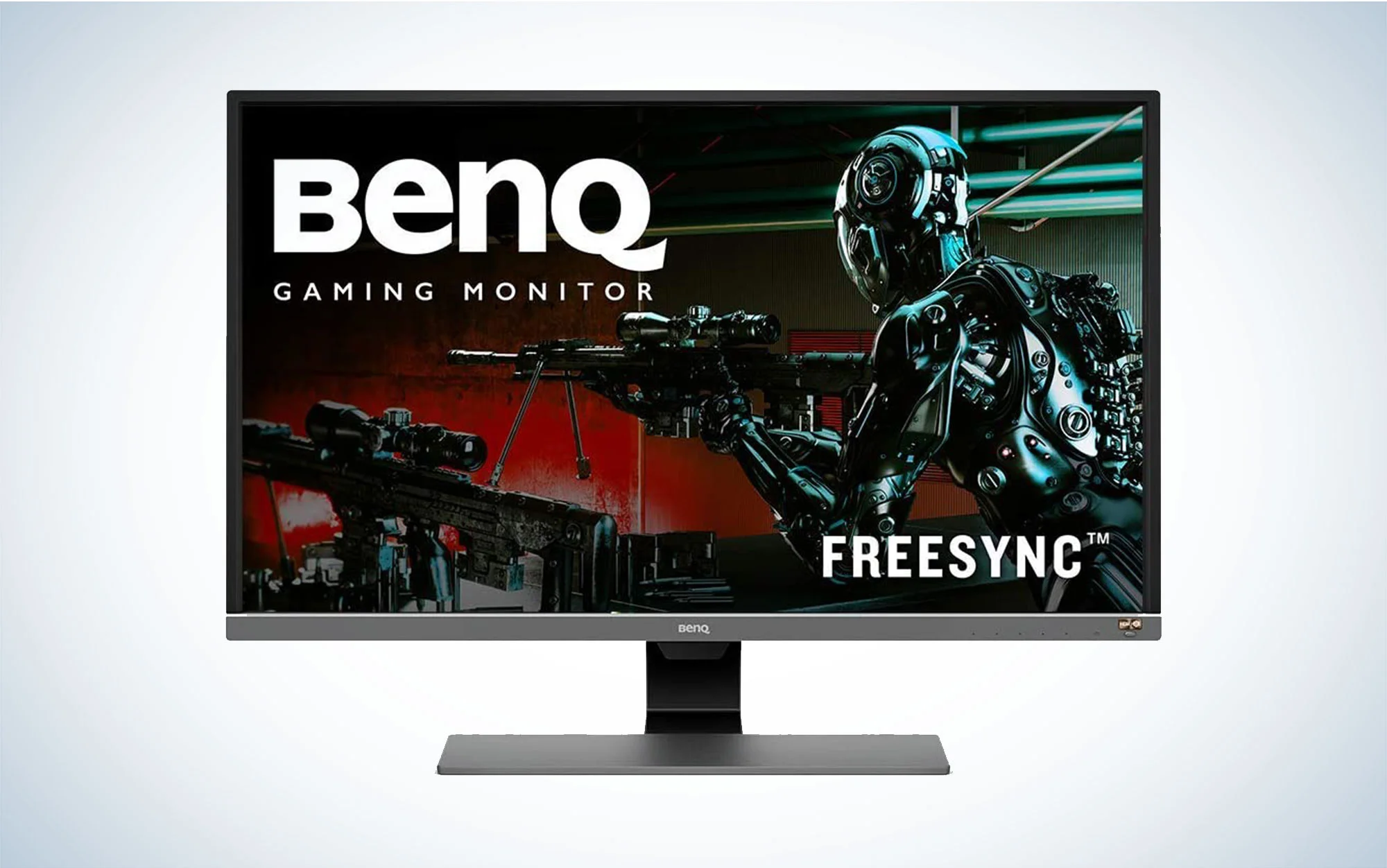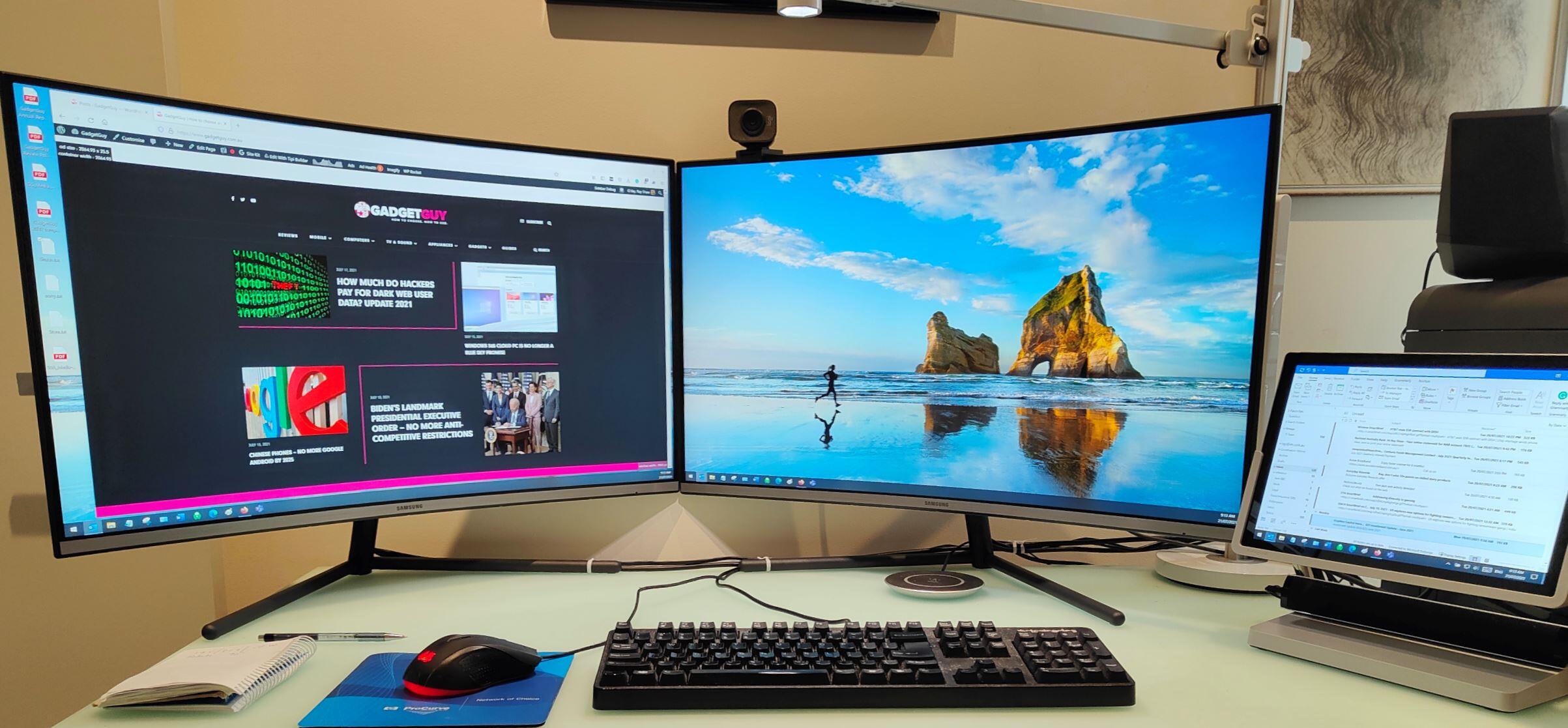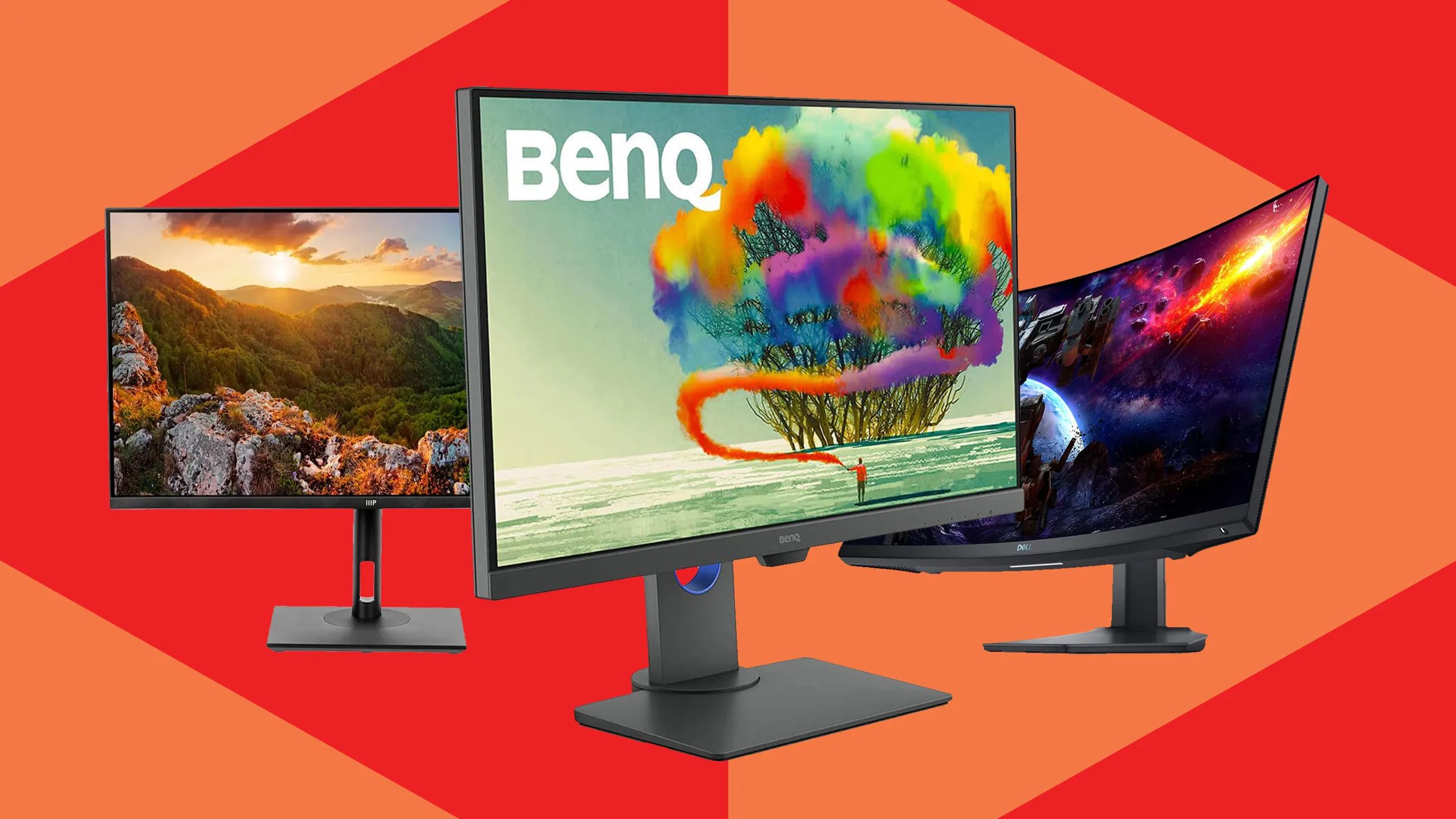Introduction
Welcome to the world of high-resolution displays! In recent years, 4K monitors have rapidly gained popularity, offering users stunning visuals and an immersive viewing experience. Gone are the days when standard resolution screens sufficed for everyday tasks. With the advent of 4K technology, users can now enjoy razor-sharp details and vibrant colors like never before.
But what exactly is a 4K monitor? How does it work, and what are the benefits of using one? Whether you’re a gamer, a content creator, or simply an avid multimedia consumer, understanding the capabilities of a 4K monitor is essential to make an informed purchase decision.
In this article, we will delve into the world of 4K monitors, exploring their features, advantages, and considerations. By the end, you’ll have a solid grasp of what a 4K monitor is all about and be well-equipped to decide if it’s the right choice for you.
What is 4K?
4K, also known as Ultra HD (UHD), is a display resolution that offers four times the number of pixels compared to a standard Full HD display. The term “4K” refers to the approximate number of horizontal pixels in the resolution, which is around 4,000.
Specifically, a 4K resolution typically has a pixel count of 3840 pixels horizontally by 2160 pixels vertically, resulting in a total of over 8 million pixels. This increased pixel density allows for incredibly sharp, detailed images with exceptional clarity.
The higher pixel count of a 4K monitor translates into a higher pixel density per inch, resulting in a more immersive visual experience. This increased pixel density ensures that individual pixels are virtually indistinguishable to the naked eye, creating a smoother and more lifelike image on the screen.
It’s important to note that 4K is not limited to monitors alone. The term is also used to describe other devices, including televisions, cameras, projectors, and even smartphones. However, in this article, our focus will primarily be on 4K monitors.
With 4K becoming more accessible and affordable, it’s no wonder that many users are making the switch to experience the breathtaking visuals and enhanced productivity that these high-resolution displays offer.
How does a 4K monitor work?
A 4K monitor utilizes advanced display technology to provide users with an enhanced visual experience. The key component that makes a 4K monitor stand out is its significantly higher pixel count.
Traditional displays, such as Full HD monitors, have a pixel count of 1920 pixels horizontally by 1080 pixels vertically. In contrast, a 4K monitor has a pixel count of 3840 pixels horizontally by 2160 pixels vertically, resulting in a much higher density of pixels.
These additional pixels enable a 4K monitor to display more detailed images, sharper text, and greater color accuracy. Each individual pixel on a 4K monitor is smaller and more closely packed together, resulting in a smoother image with finer details that are far less pixelated compared to lower resolution displays.
Furthermore, 4K monitors often employ advanced display technologies such as In-Plane Switching (IPS) or Organic Light-Emitting Diode (OLED) panels to further enhance the visual quality. These technologies offer wider viewing angles, improved color accuracy, and better contrast ratios, ensuring that the images displayed on the screen are vibrant and lifelike.
Another crucial aspect of a 4K monitor is its ability to support high refresh rates. Refresh rate refers to the number of times the display updates per second. Higher refresh rates, such as 120Hz or 144Hz, result in smoother motion and reduce motion blur, especially during fast-paced gaming or video playback.
To harness the full potential of a 4K monitor, it’s important to ensure that the display output from your computer or device supports the 4K resolution. This typically requires a compatible graphics card or onboard graphics that can handle the increased demands of rendering the higher pixel count.
Overall, a 4K monitor combines a higher pixel count, advanced display technologies, and support for high refresh rates to deliver a visually stunning experience that far surpasses the capabilities of lower resolution displays.
Benefits of using a 4K monitor
Using a 4K monitor comes with a multitude of benefits that enhance the overall visual experience and productivity. Let’s explore some of the key advantages of upgrading to a 4K monitor:
- Unparalleled image quality: The higher pixel count of a 4K monitor results in incredibly sharp and detailed images. Whether you’re editing photos, watching movies, or playing games, the level of detail and clarity is unmatched, creating a more immersive and lifelike experience.
- Enhanced productivity: The increased screen real estate offered by a 4K monitor allows you to fit more content on the screen without sacrificing clarity. This is especially beneficial for professionals who rely on multitasking or require precise detail in their work, such as video editing, graphic design, or data analysis.
- Crisp text and graphics: With a higher pixel density, fonts and graphics appear sharper and more legible on a 4K monitor. This is particularly advantageous for reading text-heavy documents, browsing the web, or working with intricate designs where clarity is essential.
- Wider color gamut: Many 4K monitors come equipped with advanced technologies like HDR (High Dynamic Range), allowing for a wider color gamut and more accurate color reproduction. This results in vivid, lifelike colors and greater overall visual fidelity.
- Future-proofing: As 4K content becomes more prevalent in media and entertainment, owning a 4K monitor ensures that you can fully enjoy the latest high-resolution content without compromising on image quality.
It’s important to note that reaping the benefits of a 4K monitor not only depends on the hardware but also on the content being displayed. To fully appreciate the enhanced visuals, it’s crucial to consume or create content that is optimized for 4K resolution.
Overall, a 4K monitor is an excellent investment for those seeking superior image quality, improved productivity, and an immersive visual experience that elevates their digital interactions to a whole new level.
Things to consider before buying a 4K monitor
Before making a purchase decision, there are several important factors to consider when buying a 4K monitor. Understanding these considerations will help ensure that you select the right monitor that meets your needs and provides the best possible performance:
- Budget: Determine your budget range for a 4K monitor. Prices can vary significantly depending on the brand, features, and size. Establishing a budget will help narrow down your options and prevent overspending.
- Screen Size: Consider the ideal screen size for your preferences and workspace. Larger screens can offer a more immersive experience, but they may also require more desk space. Consider your viewing distance and the size of your desktop to find the right balance.
- Refresh Rate: Higher refresh rates result in smoother motion and reduce blurring, especially during fast-paced gaming or video playback. Determine if a higher refresh rate, such as 120Hz or 144Hz, is important to you based on your usage requirements.
- Connectivity Options: Check the available ports and connectivity options of the 4K monitor. Ensure that it has the necessary ports to connect to your computer or other devices, such as HDMI, DisplayPort, or USB-C, based on your specific needs.
- Compatibility: Ensure that your computer or device can support a 4K resolution. Check the minimum requirements for graphics card capabilities or onboard graphics to ensure compatibility and avoid any potential issues.
- Panel Technology: Consider the different types of display panel technologies available for 4K monitors, such as IPS, TN, or VA. Each has its own strengths and weaknesses in terms of color accuracy, contrast ratios, viewing angles, and response times.
- Additional Features: Research and prioritize additional features that are important to you. This may include built-in speakers, adjustable stands, HDR support, or color calibration options.
- Brand and Customer Reviews: Research different brands and read customer reviews to gauge the reputation, reliability, and customer satisfaction of each brand and model.
Considering these factors will help guide you towards selecting a 4K monitor that fits within your budget, offers the desired features, and meets your specific usage requirements. Taking the time to research and weigh your options will ensure a well-informed decision and a more satisfactory 4K monitor ownership experience.
Popular brands and models of 4K monitors
When it comes to 4K monitors, there are numerous renowned brands that offer a wide range of models to choose from. Here are some of the most popular brands known for their quality and innovation in the 4K monitor market:
- Dell: Dell is well-regarded for its high-quality monitors, and their 4K offerings are no exception. Models like the Dell UltraSharp series and the Dell Alienware series provide excellent color accuracy, wide viewing angles, and great build quality.
- LG: LG is known for its diverse lineup of 4K monitors, catering to various needs and budgets. Their monitors feature vibrant IPS panels, excellent color reproduction, and sleek designs. The LG UltraFine and LG UltraGear series are popular choices among professionals and gamers, respectively.
- ASUS: ASUS offers a range of 4K monitors that deliver impressive performance and features. Their Republic of Gamers (ROG) series, in particular, caters to gamers with high refresh rates, adaptive sync technology, and responsive panels.
- Samsung: Samsung is a trusted name in display technology, and their 4K monitors boast stunning visuals and innovative features. The Samsung UHD series offers vibrant colors, HDR support, and ultra-slim designs.
- HP: HP delivers reliable and feature-rich 4K monitors suitable for various purposes. Their EliteDisplay and Z series monitors are popular choices, offering wide color gamut, ergonomic design, and advanced connectivity options.
- BenQ: BenQ specializes in monitors targeted towards professionals and designers. Their PD and SW series monitors offer exceptional color accuracy, factory calibration, and advanced features for precise color-critical work.
- ViewSonic: ViewSonic offers a range of 4K monitors known for their affordability and quality. Their VP and XG series monitors combine good color accuracy, fast response times, and a variety of connectivity options.
These are just a few of the many reputable brands that produce high-quality 4K monitors. It’s important to research and compare specific models within each brand’s lineup to ensure you find a monitor that suits your needs, preferences, and budget.
Reading customer reviews and consulting professional reviews can also provide valuable insights into the performance and reliability of different models, helping you make an informed decision.
How to set up and optimize a 4K monitor
Setting up and optimizing a 4K monitor can greatly enhance your viewing experience and ensure that you’re getting the most out of its capabilities. Here are some steps to help you set up and optimize your 4K monitor:
- Connectivity: First, ensure that you have the necessary cables and connections to connect your 4K monitor to your computer or device. Use the appropriate cables such as HDMI, DisplayPort, or USB-C, depending on the available ports on your devices.
- Resolution Settings: Adjust the resolution settings on your computer or device to match the native resolution of your 4K monitor. This can usually be found in your computer’s display settings or graphics control panel. Set the resolution to 3840 x 2160 for optimal clarity and image quality.
- Scaling: Depending on the size of your 4K monitor and your personal preference, you may need to adjust the scaling settings to ensure that text and elements are easily readable. This can be done in the display settings of your operating system.
- Color Calibration: Calibrate the color settings on your 4K monitor to ensure accurate and vibrant colors. Use built-in calibration tools within your monitor’s settings or consider using third-party calibration software for more precise adjustments.
- Refresh Rate: If your 4K monitor supports a higher refresh rate, ensure that it is set to the appropriate value. This can improve motion clarity and reduce blur, especially during fast-paced activities like gaming or video playback.
- Brightness and Contrast: Adjust the brightness and contrast settings according to your environment and personal preference. Experiment with different settings to find the right balance that provides a comfortable viewing experience without compromising on details.
- Software Optimization: Ensure that your computer’s graphics drivers are up to date to optimize performance and compatibility with your 4K monitor. Regularly check for driver updates from the manufacturer’s website or through your operating system’s update process.
- Placement and Ergonomics: Consider the placement and positioning of your 4K monitor for optimal viewing. Ensure that it is positioned at a comfortable eye level and at an appropriate distance from your seating area to prevent neck strain and promote ergonomic comfort.
By following these steps, you can set up and optimize your 4K monitor to deliver a visually stunning and comfortable viewing experience. Remember to periodically review and fine-tune your monitor’s settings as per your changing requirements or to adapt to different lighting conditions.
Frequently asked questions about 4K monitors
Here are some commonly asked questions about 4K monitors to help address any uncertainties you may have:
- What is the difference between 4K and Ultra HD?
The terms 4K and Ultra HD (UHD) are often used interchangeably, referring to the same resolution of 3840 x 2160 pixels. Technically, UHD is slightly different as it also encompasses higher resolutions such as 8K. - Can my computer handle a 4K monitor?
To support a 4K monitor, your computer needs to have a compatible graphics card or onboard graphics that can handle the increased demands of rendering a higher pixel count. Check the specifications of your computer or consult with the manufacturer to ensure compatibility. - Does a 4K monitor improve gaming performance?
While a 4K monitor offers excellent visuals, gaming performance depends on the capabilities of your computer’s graphics card and the optimization of the game itself. Higher resolutions can be more demanding on your system, so ensure that your hardware is capable of running games at 4K. - Do I need a special cable to connect a 4K monitor?
Yes, you need a cable that can support the bandwidth required for 4K resolution. HDMI 2.0 or DisplayPort 1.2 cables are commonly used for connecting 4K monitors, as they offer the necessary bandwidth for high-resolution content. - Can I upscale content to display in 4K?
While some 4K monitors may have built-in upscaling capabilities, it’s generally better to view content that is natively in 4K resolution. Upscaling lower resolution content may result in a slight loss of sharpness and detail. - Can I use a 4K monitor for professional work, such as photo or video editing?
Absolutely! 4K monitors are well-suited for professional work that demands color accuracy and fine detail. Many 4K monitors offer wide color gamut coverage and accurate color representation, making them ideal for tasks like photo editing, video editing, and graphic design. - Is a 4K monitor worth it for non-professional use?
While a 4K monitor provides exceptional visual quality, it may not be necessary for everyday tasks like web browsing or document editing. However, if you frequently consume multimedia content, play games, or simply want a more immersive viewing experience, a 4K monitor can greatly enhance your enjoyment.
These are just a few of the common questions regarding 4K monitors. If you have other inquiries or specific concerns, feel free to research further or consult with experts and customer support from the monitor manufacturer.
Conclusion
4K monitors have revolutionized the way we consume and interact with digital content. With their higher pixel density, advanced display technologies, and immersive visual experience, 4K monitors offer unparalleled image quality and enhanced productivity for a wide range of users.
In this article, we explored what 4K monitors are and how they work. We discussed the benefits of using a 4K monitor, such as superior image quality, enhanced productivity, and future-proofing capabilities. We also highlighted important factors to consider before purchasing a 4K monitor, including budget, screen size, refresh rate, connectivity options, and brand reputation.
Additionally, we provided insights on popular brands and models of 4K monitors, giving you a starting point for your research. We also covered how to set up and optimize your 4K monitor, ensuring the best possible viewing experience by adjusting resolution settings, color calibration, refresh rates, and more.
Lastly, we addressed common questions about 4K monitors to provide clarity on topics such as differences between 4K and Ultra HD, compatibility with gaming, connectivity requirements, content upscaling, and professional usage.
By understanding the features, advantages, and considerations of 4K monitors, you can make an informed decision when choosing the right monitor for your needs. Whether you’re a gamer, creative professional, or multimedia enthusiast, a 4K monitor can take your viewing experience to new heights, immersing you in a world of breathtaking visuals and stunning detail.
So, why wait? Dive into the world of 4K monitors and unlock a whole new level of visual excellence and productivity!







